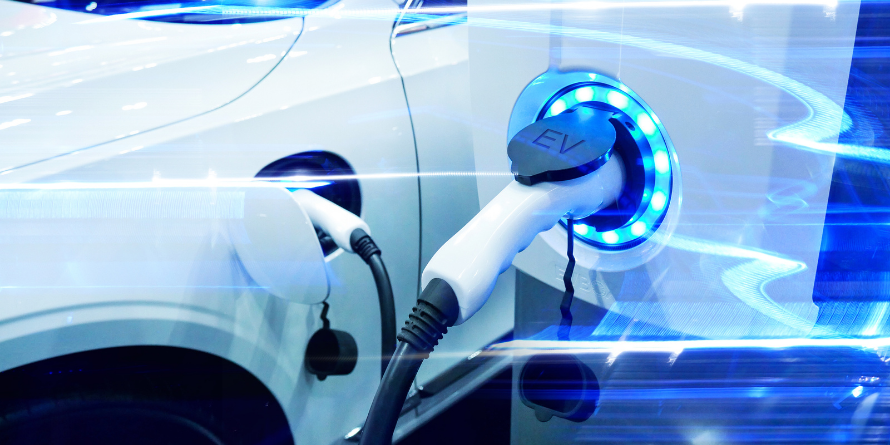Posted on: 22/06/2021
Head of Products: Digital Trading and VPP, Boz Bozhkov, delves into the importance of Electric Vehicles (EVs) in the UK’s transition to net-zero and what businesses need to consider when developing a smart EV infrastructure. Boz also provides an update on a Vehicle-to-Grid (V2G) proof of concept project that we are involved in, along with several commercial partners.
EV deployment at scale presents a significant challenge to the power grid but also offers an important source of untapped flexibility to the electricity system. With their reduced tailpipe emissions, EV’s will play a huge part in meeting the UK’s net-zero carbon emissions targets by 2035. EV batteries’ flexibility can be used to optimise how businesses use their resources – for example, they can be charged when the power cost is lowest and help manage the overall site demand in a way that reduces the non-commodity costs or even generate revenues by exporting power back to the grid.
As the economy continues to transform on this transition to net-zero, the energy sector becomes even more dominated by intermittent renewable generation and electricity demand increases with the growing uptake of EVs. There becomes a much greater need for flexibility sources to help keep the grid in balance so, how can we leverage EVs and Vehicle-Grid-Solutions (V2G) at a commercial scale?
EV and V2G Proof-of-Concept project
A few month's ago, we announced SmartestEnergy’s involvement in a Proof-of-Concept (POC) project to explore how large businesses could leverage Vehicle-to-Grid (V2G) and Vehicle-to-Building (V2B) technologies. V2G and V2B are solutions that allow energy to be transferred between the EV and the electrical grid or the on-site-demand. A car battery may be dynamically charged and discharged to help regulate fluctuation in the power grid or to address peaks and troughs of the on-site demand or generation.
With this POC project, we are collaborating with leaders in the energy and technology sectors to focus on flexibility and are testing predictive controls and optimisation strategies to inform future service offerings for UK businesses. We are committed to supporting the UK’s efforts to increase EV adoption and assist businesses in their consideration on how best to electrify their fleet to achieve net-zero carbon targets, optimise EV batteries and maximise returns on investment.
For businesses interested in the switch to EVs, it is important to consider the management of multiple complex systems. Planning for these requirements allows businesses to operate within import and export constraints and help build an informed charging infrastructure. This infrastructure would be able to secure and reconcile against multiple power tariffs and allow for interoperability amongst a multi-asset system.
Business sites must have the flexibility to shift demand and the ability to charge EVs to lower cost periods. This would enable companies to leverage onsite generation at a low cost through technologies such as Solar Photovoltaics (PV). The final element is providing power services to the Grid whereby a business would sell excess power back into the Grid, allowing them to maximise revenue opportunities using the V2G technology.
We believe that the only way for electric vehicles to be deployed and adopted at scale will be if they are integrated in a much more organic way into the users’ lives and the transport infrastructure. This holistic approach will allow the project team to design total customer solutions across their energy and transportation requirements and positively contribute to the wider transport electrification and the UK’s transition to net-zero.
Up to 11 million EV’s on the roads by 2030
EVs have been increasing in popularity with a growth of 66 per cent in 2019 and an estimated 11 million EVs on British roads by 2030 (and potentially over £30m by 2040), according to National Grid Future Energy Scenarios 2020.
Thursday 17th June marked the launch of the UK’s largest air pollution campaign, Clean Air Day, which aims to improve public understanding and build awareness of how air pollution affects our health, explaining the easy actions we can all take to tackle air pollution. With 80 per cent of nitrogen dioxide recorded at the roadside, switching over to electric vehicles (EV) is a key component to tackling air pollution. There are plans for the Ultra-Low Emission Zone to expand from central London to create a single larger zone. This means those driving within this zone will either have to pay a hefty daily charge or switch to an EV.
We welcomed Jim Scott from Grid Edge to join us for our ‘Net-Zero Week’ Festival last week, Jim gave us an insight into the progress of the project and exhibited their V2G charger unit and Nissan and Tesla EVs just outside our Canary Wharf offices. Watch a recording of the virtual seminar below.

 United States
United States Australia
Australia






